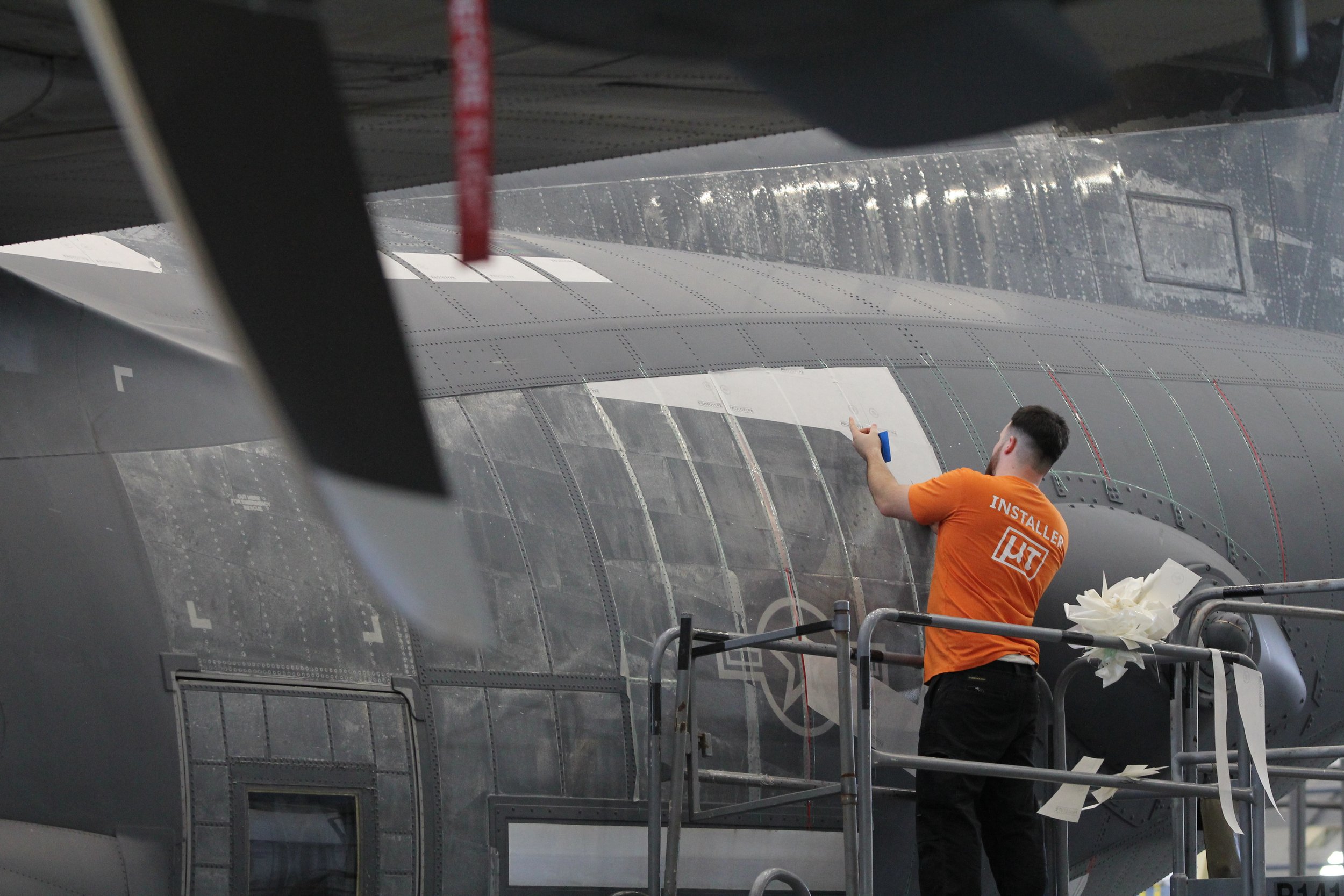What does it mean to be an “end-to-end” riblet solution provider?
At MicroTau we define ourselves as being an “end-to-end” shark skin riblet solution provider. This doesn’t mean from shark nose to shark tail, but instead means that MicroTau manages all elements of the product’s development lifecycle and implementation - from conception to delivery and beyond - resulting in a turnkey solution for our customers. There are several significant elements within the development process that result in an optimised aerodynamic efficiency benefit for our customers, which we’ll explore here.
Design
Being different sizes, shapes, and configurations, each aircraft type has a unique aerodynamic profile that must be considered when designing and optimising a riblet solution. The two primary factors to be considered in the design of the product are the geometry of the riblet microstructures and the layout on the aircraft.
Riblet Geometry
Riblet geometry refers to the size, shape, and spacing of the riblet microstructures, all of which are customised according to the flow of air around the aircraft at specific points. When tailoring the geometry, MicroTau aims to optimise the performance of the riblets according to the needs of the customer. In commercial aviation, this typically means we are designing the riblets to minimise fuel consumption at cruise, as this is where an aircraft spends most of its time when in flight.
Image: Cross-sectional microscopic image of MicroTau riblets
Riblet Layout
In parallel to riblet geometry design, the location of the riblets on the aircraft is also considered when designing the complete riblet solution. MicroTau employs Computational Fluid Dynamics analyses of airflow around the aircraft, which solves for three issues:
Where on the aircraft will benefit from riblet application,
Where on the aircraft will not benefit from riblet application (such as the nose and leading edges; an equally important exercise), and
Where specific riblet geometries belong on the aircraft to optimise drag reduction
Areas where the riblet package would be damaged during normal operation, such as near high-heat exhausts, are avoided. Areas where the riblet package would affect the usability or safety of the aircraft, such as walkways and over door seals, are also avoided.
The output of the riblet layout design process is a blueprint detailing the layout of the riblet package on the aircraft and how the riblet geometries map to that layout. This blueprint is delivered to the manufacturing team for production, and also to the installation team for application to the aircraft.
Manufacturing
The manufacturing stage is where MicroTau’s proprietary applied science really shines: using our Direct Contactless Microfabrication (DCM) process, we are able to rapidly produce a ‘master’ - an original version of a riblet design from which the large volumes required for a full aircraft are derived. DCM is highly customisable and riblet designs can be created both quickly and inexpensively. The master is then transformed into a format that can be integrated into the scale manufacturing process to produce the hundreds of square metres of riblets required for a full aircraft.
Image: Riblet package during production. Credit: Guy Templeton
During manufacturing, an adhesive layer and ‘release liner,’ protecting the adhesive, are applied to the underside of the riblets and an ‘application tape,’ for protection during transportation and installation, applied over the top.
Finally, the manufactured material must pass quality control, where riblet material coming off the production line is tested for a) macroscopic visual quality to ensure the product meets aesthetic standards and b) microstructure quality to ensure the riblets are of the correct geometry.
Image: Schematic of riblet package layers
You can read more about how DCM works in our AIAA SciTech papers here.
Installation
Installation of adhesive decals is a common promotional exercise in commercial aviation, and MicroTau’s riblet package is installed in a similar way. The blueprint generated during the design stage is transformed into an installation plan detailing where specific sheets of the Riblet Package are to be applied to the aircraft.
As mentioned above, MicroTau’s Riblet Package is delivered with an adhesive layer and release liner ready for the product to be installed on an aircraft. Installation is as simple as orienting the riblets with the direction of air flow, removing the release liner, and applying the adhesive side to the aircraft. Once complete, the application tape can be removed, and the aircraft is ready to fly.
Image: Installation of Riblet Package on a Lockheed Martin C-130J ‘Super Hercules’
Maintenance
MicroTau provides localised repairs, maintenance and replacement as needed to maintain consistent performance. This is integrated with existing depot maintenance cycles (e.g. B- or C-checks). It also complies with the aviation regulation that mandates paint removal during heavy maintenance checks (D checks).
Image: Installation of Riblet Package on a Lockheed Martin C-130J ‘Super Hercules’
Conclusion
End-to-end ownership of product development offers critical advantages in high-precision industries like aerospace. Rapid iteration becomes possible when design, testing, and manufacturing are tightly integrated. By controlling the entire development process, we’re able to continuously iterate on product designs to rapidly improve performance, ensure supply continuity, and optimise for different customer needs and platforms.






